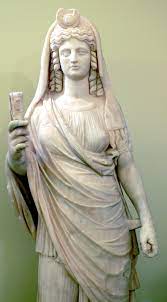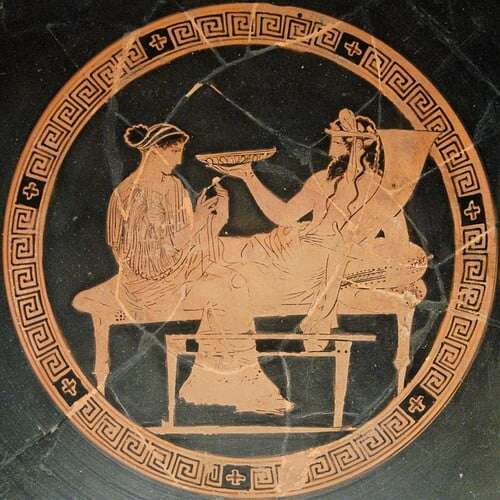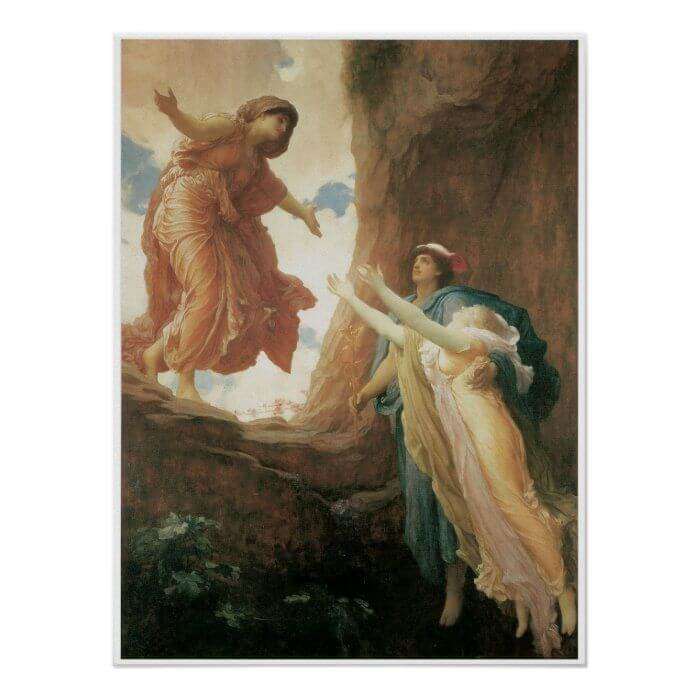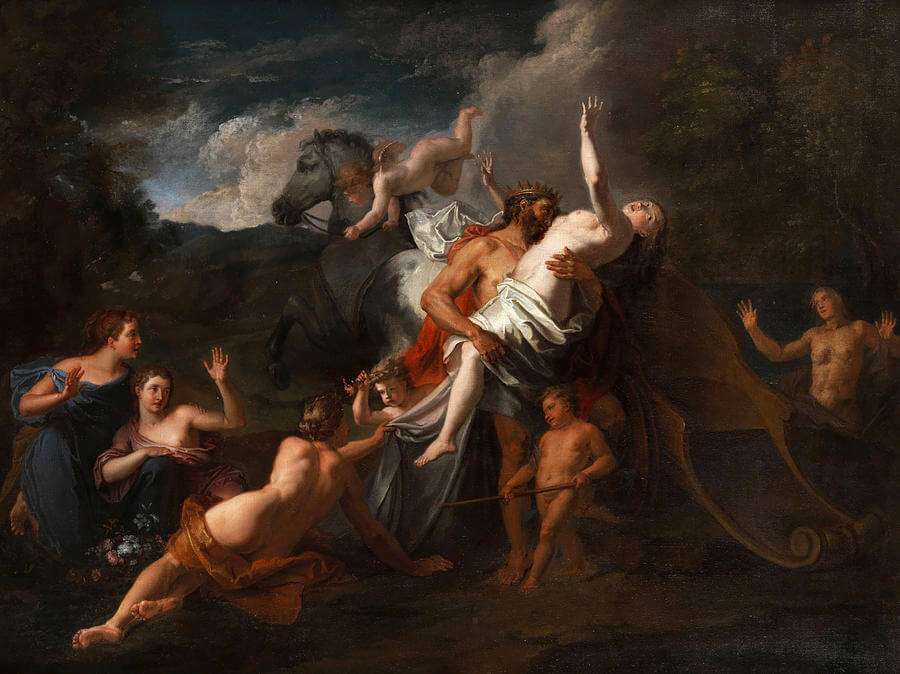I. Introduction
Persephone stands as one of the most enigmatic figures in Greek mythology, embodying an intricate blend of innocence and power. The daughter of Zeus and Demeter, she is revered both as the tender Maiden of Spring and the formidable Queen of the Underworld. Persephone’s narrative is a rich tapestry woven with threads of love, abduction, despair, and empowerment, offering a glimpse into her complex existence that straddles two contrasting worlds. As the goddess who burgeons with the blooms of spring and yet reigns over the silent depths of Hades, Persephone exemplifies a unique duality. This article aims to unravel the multifaceted nature of this iconic goddess, delving deep into ancient texts, art, and cultural practices to provide a comprehensive insight into the enigma that is Persephone — a woman caught between the effervescent light of the earthly realm and the inscrutable darkness of the underworld.
| Origin | Greek Mythology |
|---|---|
| Classification | Goddess |
| Family Members | Zeus (Father), Demeter (Mother), Hades (Uncle/Husband), Dionysus (Brother, in some accounts) |
| Region | Greece, Underworld |
| Associated with | Springtime, Vegetation, Underworld, Rebirth, the Eleusinian Mysteries |
II. Historical Background and Sources
A. Primary Ancient Sources:
The Homeric Hymn to Demeter:
An invaluable piece of ancient literature, “The Homeric Hymn to Demeter,” serves as a profound narrative window into the world of Persephone. This lyrical composition illustrates the grief-stricken journey of Demeter following her daughter’s abduction by Hades and underscores the transformative ordeal that defines Persephone’s dual existence. We delve into an analysis of the poetic techniques and narrative nuances employed to convey the emotional and mythological gravity of Persephone’s tale.

Mentions in Odes by Pindar and Other Classical Texts:
Pindar’s lyrical brilliance in his ‘Odes’ reveals snippets of Persephone’s enigmatic existence. Here, we explore how Pindar’s intricate compositions contribute to our understanding of the goddess’ role in the divine and mortal realms, offering nuanced perspectives that enrich the myth’s multifaceted narrative.
References in Ancient Plays, such as those by Aeschylus:
Aeschylus, a luminary in ancient Greek theatre, provides another layer of narrative complexity to Persephone’s story. We examine specific references and their implications, offering insights into how these plays have shaped the cultural and historical reception of Persephone’s myth.
B. Cultural Importance:
How Ancient Greeks Viewed Persephone:
Persephone was not just a mythological figure but a cultural symbol influencing ancient Greek societal norms, beliefs, and practices. We explore the societal and cultural contexts that shaped the perceptions of Persephone, drawing from a range of historical artifacts, writings, and oral traditions.
Her Influence on Festivals and Rites, Such as the Eleusinian Mysteries:
The Eleusinian Mysteries stand testament to Persephone’s indelible mark on ancient Greek religious and cultural practices. This section offers a detailed exploration of these enigmatic rituals and festivals, elucidating how the goddess’s narrative was intrinsically woven into the fabric of ancient Greek spirituality and societal life.

III. Persephone’s Dual Role
A. The Maiden of Spring:
Description of Her Life Prior to Her Abduction:
Persephone, celebrated in the annals of Greek mythology, first emerges as the radiant Maiden of Spring, a figure emblematic of rebirth and renewal. The daughter of Demeter, the harvest goddess, Persephone’s early days were marked by blissful innocence, where she danced amidst blossoming flowers and fertile lands, imbued with a spirit as untethered and vibrant as spring itself.
Her Association with Nature and Fertility:
The narrative expands, drawing correlations between Persephone’s effervescent youth and the blooming ecosystems surrounding her. A meticulous analysis will ensue, focusing on ancient texts and interpretative artworks, outlining her symbiotic relationship with the natural world. She wasn’t merely a spectator but a vital force propelling the cycles of growth and abundance.

B. Queen of the Underworld:
The Story of Her Abduction by Hades:
The article then embarks upon the pivotal moment of Persephone’s transformation – her abduction by Hades. In this segment, we describe the event in intricate detail, using ancient sources to vividly portray the narrative’s complex emotions and mythological implications. We explore each phase of the abduction, detail Demeter’s frantic search, and outline Zeus’s intervention, offering readers an encompassing view of this transformative episode.
Her Transformation and Acceptance of Her New Role:
Persephone’s sojourn in the underworld initiates a metamorphosis from a maiden encased in youthful innocence to a queen graced with formidable power. We’ll explore this transformative journey, dissecting the psychological and mythological dimensions of her adaptation to a realm steeped in shadows, mystery, and authority.
The Dynamics of Her Relationship with Hades:
In the quietude of the underworld, Persephone’s relationship with Hades blooms, oscillating between coercion and consent, subjugation and empowerment. We sift through classical interpretations and contemporary analyses to unravel the dynamics of a partnership that transcends simplistic categorizations, unearthing nuances that have kept this narrative alive through millennia.
IV. The Persephone-Hades-Demeter Triangle
A. Demeter’s Grief:
Exploration of Demeter’s Reaction to Persephone’s Abduction:
Demeter’s maternal anguish at the loss of Persephone pierces through the annals of Greek mythology. In this section, we delve into a poignant exploration of a mother’s grief, drawing upon primary texts and scholarly interpretations to offer an intimate glimpse into Demeter’s despair and her relentless quest for her lost daughter.
The Impact on the Mortal World: The Creation of Winter:
The narrative expands to delineate the broader repercussions of Persephone’s abduction. As Demeter’s sorrow plunges the world into a barren, icy stillness, we analyze the mythological inception of winter. Insights from climate studies and ancient texts are synergized to illustrate how this profound myth mirrors the cyclical, impermanent nature of earthly existence.

B. The Compromise:
The Pomegranate Seeds and Their Implications:
The pivotal moment of Persephone consuming the pomegranate seeds is illuminated with incisive detail, unraveling its mythological and psychological implications. Drawing from varied sources, this segment extrapolates the symbolic meanings encoded within this act, offering readers a rich, multifaceted understanding of Persephone’s binding to the Underworld.
The Agreement for Persephone to Divide Her Time Between the Underworld and the Surface:
The article then unpacks the ensuing compromise that defines the rhythmic dance of seasons. We chart the meticulous negotiations, the roles of celestial arbitrators, and the final edict that marks Persephone’s cyclic transitions. Sources ranging from ancient inscriptions to modern interpretations are employed to convey the enduring legacy of this mythic accord.
V. Representations in Art and Literature
A. Ancient Depictions:
In this segment, we journey through the visual tapestry of Persephone’s legacy etched in ancient Greek art. We offer a detailed exploration of the intricate pottery, majestic sculptures, and evocative frescoes that have immortalized her dual identity. Every stroke, curve, and hue is analyzed to decipher the narratives and sentiments encapsulated within these timeless creations. These artistic portrayals offer not just visual delights but are rich reservoirs of cultural, historical, and psychological insights that accentuate Persephone’s mythic odyssey.
B. Modern Interpretations:
Transitioning from the ancient to the contemporary, this section embarks on an exploration of Persephone’s enduring presence in modern creative expressions. We dissect portrayals of the enigmatic goddess in contemporary art, literature, and cinema, unveiling how the essence of her myth transcends time, adapting and evolving while retaining its core thematic pillars.
Persephone’s narrative metamorphosis is charted meticulously. We analyze the shifting lenses through which she has been perceived, from a victim of Hades’ caprice to an empowered Queen of the Underworld. Through a comparative analysis rooted in a diverse array of sources, this section unveils the evolution of Persephone’s characterization and her fluctuating symbolic meanings within societal contexts.

VI. Lessons from Persephone’s Tale
A. Themes of Duality:
In this part, we will embark on an insightful examination of the intricate dance between opposites encapsulated in Persephone’s tale. Drawing from a rich reservoir of ancient texts and modern interpretations, this section illuminates the harmonious coexistence of life and death, joy and sorrow, manifest in Persephone’s transitions between the earthly realm and the underworld. The goddess’s narrative becomes a reflective lens through which readers can explore the inherent duality of human existence and the natural world.
B. Personal Growth and Transformation:
Persephone’s transformation is not just a mythological narrative but a profound allegory of personal evolution. This segment provides a comprehensive analysis of the psychological undercurrents of Persephone’s journey. It is a rich, multi-dimensional exploration of themes of identity, empowerment, and transformation, offering readers not just an understanding of an ancient myth but a reflective mirror to explore their own journeys of self-discovery and transformation.
C. Relevance to Today’s World:
We then weave Persephone’s ancient tale into the fabric of contemporary existence. The goddess’s narrative weaves themes of loss, adaptation, and renewal, standing in stark contrast to modern challenges. We root our intricate analysis in psychological and sociological perspectives, offering readers insights to navigate grief, embrace change, and foster renewal amidst today’s complex world.
VII. Conclusion
Persephone’s narrative, woven with intricate threads of duality, transformation, and renewal, continues to resonate in the collective consciousness, transcending the boundaries of time and culture. Rooted in ancient Greek mythology, her journey from the sunlit meadows to the shadowed recesses of the Underworld encapsulates universal themes of human existence. Even today, Persephone’s tale echoes the cycles of despair and hope, loss and recovery, silence and blossoming that characterize the human journey. Each transition, each phase of her mystical odyssey, illuminates pathways of understanding grief, embracing transformation, and celebrating renewal. As we delve into the labyrinth of art, literature, and psychological insights that her story has inspired, we encounter not just an ancient goddess but a timeless symbol of life’s undulating rhythms, echoing the immutable dance of dissolution and creation, darkness and light.
